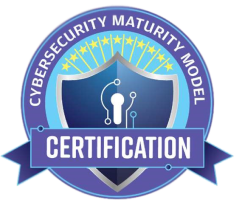
Artificial intelligence (AI) is no longer a sci‑fi fantasy—it’s a foundational technology reshaping every sector. As we approach 2026, large language models (LLMs) are evolving rapidly with longer context windows, multimodal understanding and agentic capabilities. They’re powering everything from chatbots and decision‑support systems to creative tools and autonomous agents. This in‑depth article, written for Clarifai’s community and the broader AI ecosystem, explores the leading LLMs to watch, the innovations driving them, the industries they’re transforming and how to navigate governance and risk. You’ll also see how Clarifai’s platform can help you orchestrate, monitor and secure these models across your enterprise.
Now let’s dive into the details.
Large language models went from research curiosities to powerful foundation models in less than a decade. The early 2020s saw GPT‑3 and GPT‑4 generating natural dialogue, summarizing documents and writing code. But by 2025, the conversation shifted from “Which model is best?” to “How do we integrate LLMs reliably with up‑to‑date knowledge, cost efficiency and safety?”. This shift reflects the maturity of the ecosystem: dozens of proprietary and open models, specialized designs and new ways to combine them through retrieval‑augmented generation (RAG) and fine‑tuning.
Several trends set the stage for 2026:
The landscape of language models is expanding rapidly. Here are the models you should watch, along with their distinctive strengths and potential use cases.
Strengths: Building on GPT‑4 Turbo, GPT‑5 is rumored to feature chain‑of‑thought reasoning, support for 200 k token context windows and native multimodal input (text, images, audio, video). OpenAI executives suggest it will reduce factual mistakes and improve alignment.
Use Cases: Advanced research assistants, legal reasoning, code generation, and creative writing. The extended context window means GPT‑5 could handle entire legal documents or years of emails in a single request.
Strengths: Google DeepMind’s Gemini models already integrate text, image and audio processing. Gemini 2.5 Pro is praised for multimodal creativity and tight integration with Google Search. Its successor, Gemini 3, is expected to deliver faster inference, improved reasoning and better data privacy through federated learning.
Use Cases: Content summarization, research, corporate knowledge assistants, creative design and cross‑language translation.
Strengths: Anthropic focuses on safety and constitutional AI—models are trained on guidelines designed to minimize harmful output. Claude 3.5 features long context windows and extended thinking modes; Claude 4 may add improved reasoning and memory.
Use Cases: Sensitive applications requiring strong alignment, such as healthcare consultations, legal analysis and educational tutoring.
Strengths: Meta’s Llama family continues to champion open‑source innovation. Llama 4 is rumored to come in multiple sizes—Scout (compact), Maverick (mid‑range) and Behemoth (large)—for different deployment scenarios. As open models, they allow modification and private deployment.
Use Cases: Customizable chatbots, research prototypes and community projects. Their open weights make them ideal for fine‑tuning with domain data.
Strengths: Mistral’s mixture‑of‑experts architecture yields a strong price–performance ratio with efficient inference. Mixtral 10x22B offers powerful reasoning while selectively activating parameter “experts,” reducing compute cost.
Use Cases: Enterprise applications needing large context (128 k tokens) but constrained budgets, such as summarizing call centers or legal archives.
Strengths: Developed by Chinese tech companies, Qwen 3 is a multilingual, open‑weight model suited for cross‑regional applications. Grok 3 (from xAI) focuses on humor and personality, promising a conversational style reminiscent of internet culture.
Use Cases: Multilingual customer support, social media engagement and domain‑specific chatbots.
Strengths: DeepSeek V3 uses an MoE architecture similar to Mistral’s, while Fuyu is built for rapid, one‑pass inference, suitable for real‑time applications. Both aim to democratize large‑scale LLMs by releasing smaller, efficient variants.
Use Cases: Low‑latency inferencing for edge devices, quick Q&A bots and dynamic recommendation engines.
With so many models, businesses need a neutral platform to deploy, compare and monitor them. Clarifai’s compute orchestration allows teams to spin up secure environments, test multiple models, run inference through local runners and instrument results with fairness dashboards. This is crucial when deciding which model balances cost, accuracy and compliance for your use case.
Rapid innovation is making LLMs more powerful, specialized and safe. Below we explore the key technological trends and their implications.
Future models understand not just text but images, audio, video and even sensor data. This shift is driven by an explosion of visual and audio content. Large multimodal models (LMMs) can, for example, watch a recorded lecture, extract important slides and generate a study guide. Zapier notes that reasoning models and multimodal models are the two most significant developments.
Imagine a digital personal shopper that reads product descriptions, watches unboxing videos and listens to influencer reviews. Using multimodal understanding, it answers questions like “Which running shoe has the best cushioning?” by synthesizing text reviews and video demonstrations. If you send a photo of your old shoes, it compares wear patterns and suggests similar models.
Traditional LLMs produce plausible text but sometimes lack logical consistency. New models emphasize chain‑of‑thought reasoning, where they write out their intermediate steps. GPT‑5 is expected to excel at this by incorporating structured reasoning methods. This capability boosts reliability in tasks like mathematics, legal analysis and software debugging.
A future model could guide you through a complex tax return. It reads your financial documents, asks clarifying questions and constructs a reasoning chain: “Income from employment → subtract contributions → compute standard deduction → check eligibility for credits,” ensuring the final result is transparent and aligned with IRS rules.
LLMs like Mistral Large 2 achieve better efficiency by routing each input through a subset of specialist “expert” layers. This design reduces compute requirements and allows the model to scale. Future MoE architectures could enable 10x larger models without 10x higher costs.
In a factory, an MoE‑based LLM receives data from sensors, logs and maintenance reports. The routing algorithm sends mechanical anomalies to a “mechanical expert,” quality issues to a “process expert” and scheduling conflicts to a “logistics expert.” The combined output offers actionable recommendations—optimizing performance without incurring unmanageable cloud bills.
To ground outputs in facts, many organisations combine LLMs with retrieval systems. Retrieval‑Augmented Generation (RAG) pulls relevant documents from databases, knowledge bases or the web, then uses them to condition the response. MIT researchers emphasize that RAG is essential to reduce hallucinations. At the same time, LoRA and QLoRA techniques enable fine‑tuning with minimal computational overhead, making domain specialization affordable.
A compliance officer wants to draft a new privacy policy. Using Clarifai’s RAG workflow, the model retrieves relevant laws (EU GDPR, India’s DPDP Act, California’s CPRA) and combines them with internal guidelines. LoRA layers fine‑tuned on company policies allow the model to tailor language to the organization’s style. The output is precise, up‑to‑date and aligned with legal requirements.
Models are extending their context windows to hundreds of thousands of tokens, enabling them to handle entire books or codebases. KumoHQ’s research lists LLMs like GPT‑4.5 and Claude 3.7 with 128 k token limits, and GPT‑5 promises even more. Beyond static context, researchers are exploring lifelong memory systems that continually learn from interactions.
A product team uses an LLM that remembers all past sprint retrospectives. When planning a new feature, the LLM recalls why certain decisions were made months ago, flags potential repeat mistakes and suggests best practices. This long‑term memory reduces institutional knowledge loss.
Not every application can rely on a cloud API. Edge models like Gemini Nano run on smartphones or IoT devices, enabling privacy‑preserving AI and low latency. These models must be efficient, secure and updateable. Clarifai’s local runners allow deploying models on‑prem or at the edge, keeping data in local environments.
A utility company equips technicians with a rugged tablet running a compressed LLM. Without internet connectivity, the device summarizes repair manuals, detects anomalies in photos of equipment and logs service reports. Once back online, the local runner syncs logs with the central database.
As AI adoption grows, one‑size‑fits‑all models are no longer sufficient. Developers are building domain‑specific LLMs for healthcare, law, finance, coding, gaming and robotics. These specialized models are trained on curated datasets and incorporate domain knowledge. Clarifai supports training and deploying custom models while enforcing governance and compliance.
A law firm uses a domain‑specific LLM that integrates case law, statutes and regulatory filings. It can draft legal briefs, perform risk assessments and cite relevant precedents—all with high accuracy and privacy compliance.
Safety remains a differentiator. Anthropic’s constitutional AI guides models using explicit rules about fairness and nondiscrimination. Clarifai’s platform integrates fairness metrics, bias detection and explainability dashboards. Independent researchers encourage mandatory bias audits and diverse datasets. These enhancements will be crucial as LLMs enter critical domains like healthcare and finance.
AI adoption is accelerating across every major industry. Below are the sectors where LLMs and generative AI will have the most impact by 2026, along with real‑world projections and creative examples.
By 2026, 80 % of initial healthcare diagnoses will involve AI analysis, up from 40 % of routine diagnostic imaging in 2024 and 60 % of pathology labs using AI workflows in 2025. LLMs will assist doctors in triage, summarizing medical records, recommending treatment plans and improving telemedicine consultations.
AI will revolutionize lending, trading and risk management. The finance sector already sees AI reviewing credit applications and algorithmic trading accounting for up to 80 % of transactions. By 2026, LLMs will deliver personalized financial advice, detect fraud and automate regulatory reporting.
Deloitte’s physical AI trend highlights embedding intelligence in physical systems like robots and sensors. In manufacturing, generative AI designs components, predicts failures and orchestrates workflows. In logistics, it optimizes routes and fleet management.
Consumers are increasingly interacting with AI rather than search engines: 58 % have replaced search with generative AI tools and 71 % want AI integrated into shopping experiences (Amplitude’s 2026 AI Playbook). Retailers will use LLMs for personalized marketing, product discovery and customer service.
Generative AI is transforming creative industries. Forbes predicts that generative video will become mainstream, enabling new storytelling forms and user‑generated content. Meanwhile, deepfake risks grow and require detection.
Adaptive learning platforms will tailor curricula to each student’s needs. Generative AI will create simulations, practice problems and immersive learning experiences.
LLMs will assist with summarization, code generation, document understanding and legal analysis. They will read long reports, extract key insights and draft emails. Clarifai’s Retrieval Augmented Generation workflows accelerate building internal knowledge assistants that search across corporate wikis and deliver concise answers.
Governments will adopt LLMs for policy summarization, citizen services and disaster response. Sovereign AI emphasises that models must comply with local laws and remain under regional control. Clarifai’s local runners enable on‑prem deployments for sensitive public sector applications.
We’re moving from reactive chatbots to proactive, autonomous agents. Agentic AI refers to systems that not only generate answers but plan and execute multi‑step tasks. Deloitte’s 2026 report lists agentic AI as one of three transformative forces.
Traditional LLM applications require human prompts. Agentic systems can:
Gartner predicts that by 2028, 80 % of customer‑facing processes will be handled by multi‑agent AI. Multi‑agent AI means collections of specialized agents working together—for example, a sales agent, a marketing agent and a legal agent collaborating on contract negotiations.
A startup uses an autonomous agentic system built on Clarifai’s AI workflows. The system:
The marketing team supervises the agent, ensuring alignment with brand values and regulatory requirements, but day‑to‑day execution is automated.
Agentic AI presents new risks. Without proper controls, an agent could take unintended actions or exploit system vulnerabilities. Gartner warns against mistaking rebranded chatbots for true agentic AI, stressing that governance, auditability and transparency are essential. Clarifai’s platform enforces policies at the orchestration layer, logs agent actions and provides fairness dashboards.
With great power comes great responsibility. The more LLMs permeate critical domains, the more we must address bias, privacy, misinformation, security and regulatory compliance.
With so many options, choosing the right model and platform can be daunting. This step‑by‑step framework helps you evaluate your options.
Generative video is going mainstream, enabling automatic storyboarding, animation and editing. Tools will convert scripts into polished videos with synthetic voices and custom backgrounds. Musicians will collaborate with AI co‑composers. This trend opens new revenue streams but raises copyright questions and authenticity concerns.
Personal AI assistants will graduate from reactive chatbots to proactive partners integrated into operating systems. Createxflow predicts that user interfaces will become AI‑native, with assistants anticipating needs, summarizing notifications and executing tasks. Interacting with a computer may feel more like conversing with a knowledgeable colleague.
Deloitte’s “physical AI” trend involves embedding intelligence into robots, drones and IoT devices. This will transform manufacturing, logistics, agriculture and healthcare. Robots will adjust to their environment, coordinate with LLMs and perform tasks safely alongside humans.
Sovereign AI ensures data stays within specific regions to comply with local laws. Deloitte notes that sovereign AI addresses privacy, security and geopolitical concerns. Gartner predicts 35 % of countries will be locked into region‑specific AI platforms by 2027. Organizations must plan for multi‑region deployments and compliance.
Amplitude predicts that personalization will shift from rules‑based segments to generative personalization, where AI agents create unique experiences for each user. Consumers are replacing search engines with conversational AI. Businesses must optimize their content for AI agents and build AI‑native marketing strategies.
Data quality defines competitive advantage. Amplitude reports that 41 % of organizations struggle with inconsistent data. The industry is moving toward unified data lakes, governance frameworks and trust layers that provide oversight across the AI lifecycle. Clarifai’s AI Lake and Control Center support data management, policy enforcement and auditing.
Global regulation is gaining momentum. The EU AI Act is expected to enforce risk‑tiered requirements. Gartner predicts “death by AI” legal claims will exceed 2 000 by 2026, fueling lawsuits and tightening accountability. Organisations must keep abreast of regional laws and build robust governance structures.
Automation will reshape the workforce. Gartner predicts 75 % of hiring processes will include AI proficiency tests by 2027. New roles will emerge: AI Ops engineers, prompt designers, AI ethicists and model governance specialists. Education programs must adapt to teach AI literacy and critical thinking.
AI’s carbon footprint is a growing concern. Mixture‑of‑experts architectures reduce compute costs and energy usage. Companies are exploring serverless inference, hardware accelerators and sustainable data center practices. Clarifai’s platform emphasizes efficient compute orchestration to minimize environmental impact.
Clarifai is committed to making AI accessible, secure and responsible. Its end‑to‑end AI lifecycle platform provides a suite of tools for data management, model training, inference, deployment and governance.
Clarifai’s compute orchestration spins up secure environments for training or inference, whether in the cloud, on‑premise or at the edge. Local runners allow sensitive workloads—like healthcare diagnostics or government services—to run within private infrastructure. This supports sovereign AI and data‑residency requirements.
With Clarifai’s model inference service, you can deploy multiple LLMs, compare their performance and route requests to the best model. Built‑in fairness dashboards help audit models for bias and monitor performance over time. Users can apply RAG workflows and integrate custom logic to improve accuracy.
AI Lake is a secure data repository where you can store, version and search datasets. The Control Center offers centralized governance—policy enforcement, user access control, audit logs and compliance reporting. This ensures that your AI initiatives remain compliant with evolving regulations like the EU AI Act.
Clarifai offers pre‑built modules for computer vision, visual inspection, content moderation and deepfake detection. These modules are used by enterprises and governments to solve real‑world problems: verifying the authenticity of user‑generated content, inspecting manufacturing defects and protecting brand safety.
LLMs in 2026 will offer larger context windows, multimodal inputs, chain‑of‑thought reasoning, efficient mixture‑of‑experts architectures, and stronger alignment. They will also integrate seamlessly with retrieval systems, making them more accurate and domain‑aware.
Use diverse training data, implement fairness metrics (equalized odds, demographic parity), conduct pre‑deployment audits and continuous monitoring. Tools like Clarifai’s fairness dashboards can help detect and mitigate bias early.
Agentic AI refers to models that not only generate content but also plan and execute tasks autonomously, interacting with tools and APIs. It’s important because it enables end‑to‑end automation of complex workflows, such as running marketing campaigns or coding entire applications.
Consider your use case, budget, privacy requirements and need for customization. Open models like Llama 4 offer flexibility and local deployment. Proprietary models like GPT‑5 or Gemini may deliver higher accuracy but require cloud access and per‑token fees.
Healthcare, finance, manufacturing, retail, media, education and government will all see significant transformation. Healthcare diagnoses, credit decisions, logistics planning and personalized marketing will rely heavily on AI.
Clarifai’s platform integrates model versioning, audit logs, bias metrics and governance dashboards. Its local runners and compute orchestration help keep data on‑premise and enforce regional policies, ensuring compliance with laws such as the EU AI Act.
By 2026, large language models will be ubiquitous, powerful and integrated into every digital interaction. The landscape will feature a diverse set of models—each optimized for different use cases—and innovations like multimodal processing, mixture‑of‑experts and agentic workflows. Governance, fairness and environmental sustainability will be as important as raw performance. As organisations adopt these models, they must prioritize trustworthy deployment, privacy and regulatory compliance. Platforms like Clarifai provide the tools to orchestrate, monitor and secure AI across its lifecycle, empowering teams to harness the promise of AI responsibly. Whether you’re building a healthcare assistant, a logistics optimizer, a creative engine or a personal AI tutor, 2026 will offer unprecedented capabilities—if you’re prepared to navigate the opportunities and challenges.
© 2023 Clarifai, Inc. Terms of Service Content TakedownPrivacy Policy






© 2023 Clarifai, Inc. Terms of Service Content TakedownPrivacy Policy